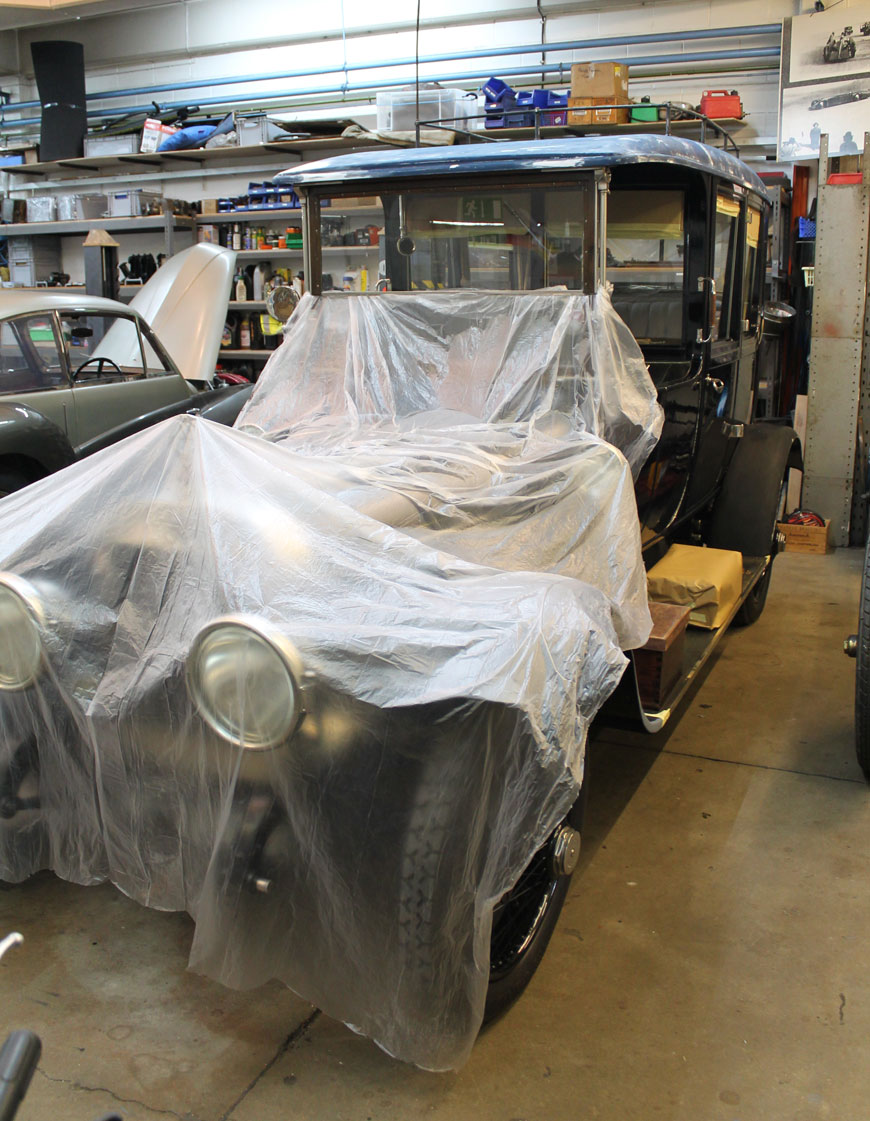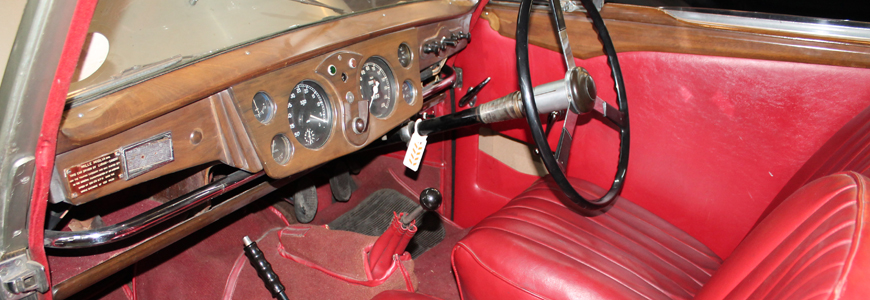
It’s all go in the workshop of the National Motor Museum, with new projects and old favourites ensuring that the engineers are kept constantly busy.

Healey Elliot resuscitation
Almost all of the National Motor Museum’s 280 vehicles are on display for Beaulieu visitors to see. However, there are one or two cars tucked away, waiting to go on show again at a later date. The 1947 Healey Elliot 2.4-litre is one such automotive treasure that came into the museum workshop for light recommissioning work, after being safely stored for a number of years.
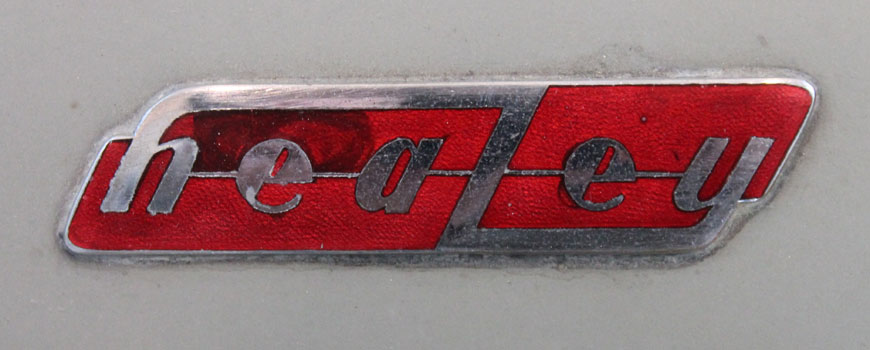
The Healey brand will be forever famous owing to the Austin-Healey and Jensen-Healey sports cars of the 1950s, 1960s and 1970s. However, the Donald Healey Motor Company was a producer of fine touring cars before these collaborative projects, starting with the 2.4-litre.
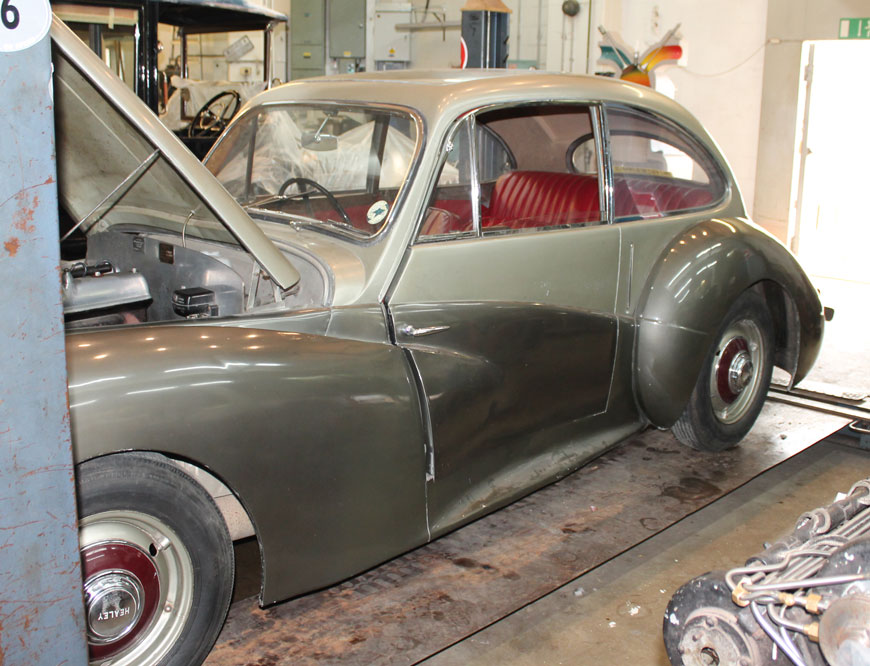
This 1947 example has quite a tale to tell. Driven by Lurani/Sandri in the 1948 Mille Miglia, the car won the touring category and was placed 13th overall in the legendary long-distance race. A plaque on the Healey’s dashboard declares that it achieved an average speed of 104mph over 1,130 miles.
Small wonder; with a lively 2,443cc overhead valve engine and independent front suspension, this model was an effective rally car. The sweeping bodywork, consisting of alloy body panels over an ash frame, was built by Elliott & Sons of Reading, giving the model its name.
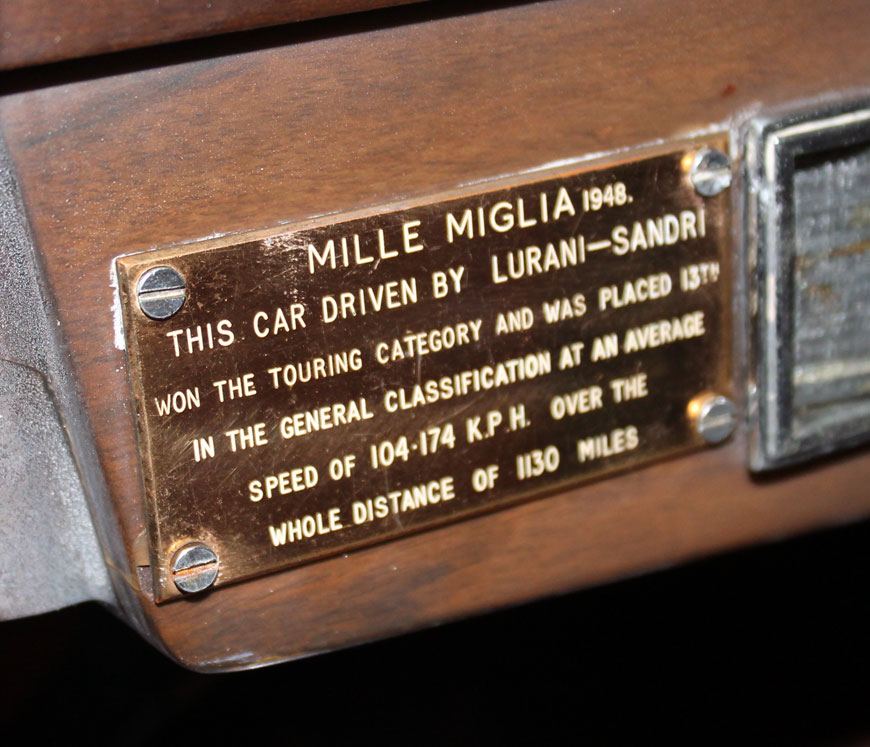
Interestingly, the Healey’s four-cylinder engine may appear to the casual observer like it has twin overhead camshafts, but as with contemporary Riley engines, the valves are opened by two rocker shafts at the top of the engine, which are operated by camshafts located much lower in the engine block.
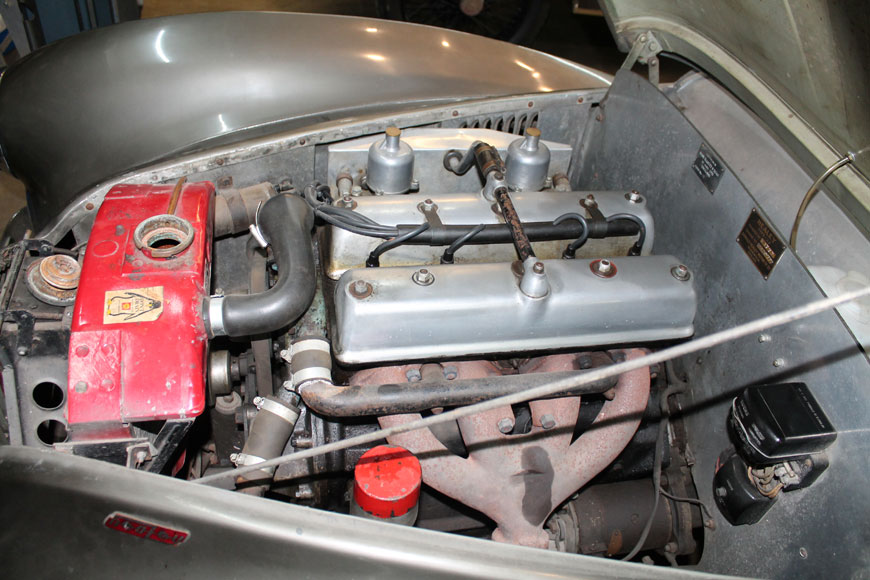
The priority for the workshop engineers was to get the car running and driving again following its careful lay-up. With the engine serviced and tuned to run at its best, the brakes were also rebuilt to ensure that the Healey stops as well as it goes. This maintenance is an essential part of the car’s preservation.

Ivor the Engine
The Monorail has received its annual overhaul, in order to keep this iconic Beaulieu feature in tip-top condition. The fibreglass carriages were lifted clear of the sturdy steel chassis assemblies, before every mechanical component was fastidiously checked, lubricated and where necessary renewed. The elevated rail track has also received a lick of paint, to keep it looking fresh.
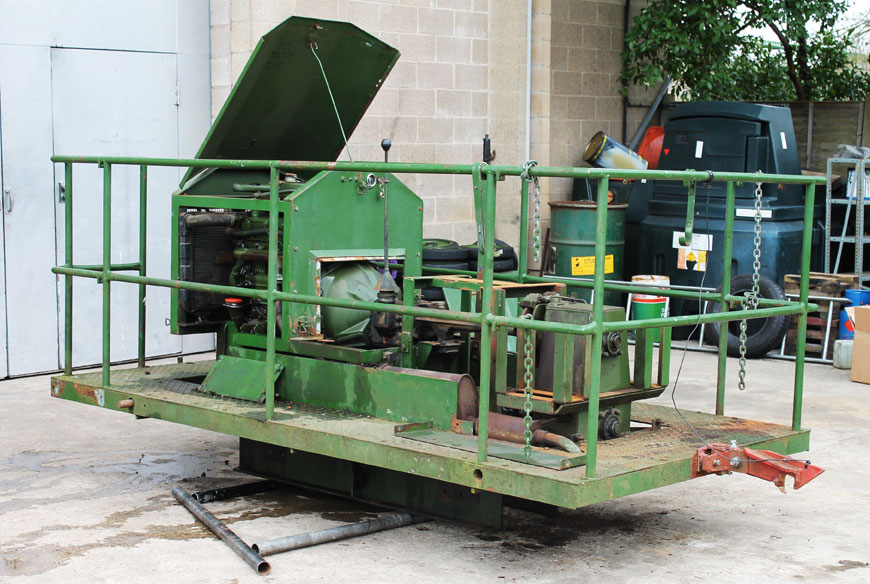
However, not many people know about the Monorail support vehicle, permanently on standby for maintenance work on the rail circuit. Affectionately known as Ivor the Engine after the famous children’s television character, this rugged back-up machine consists of a wide working platform, straddling a sturdy steel chassis.
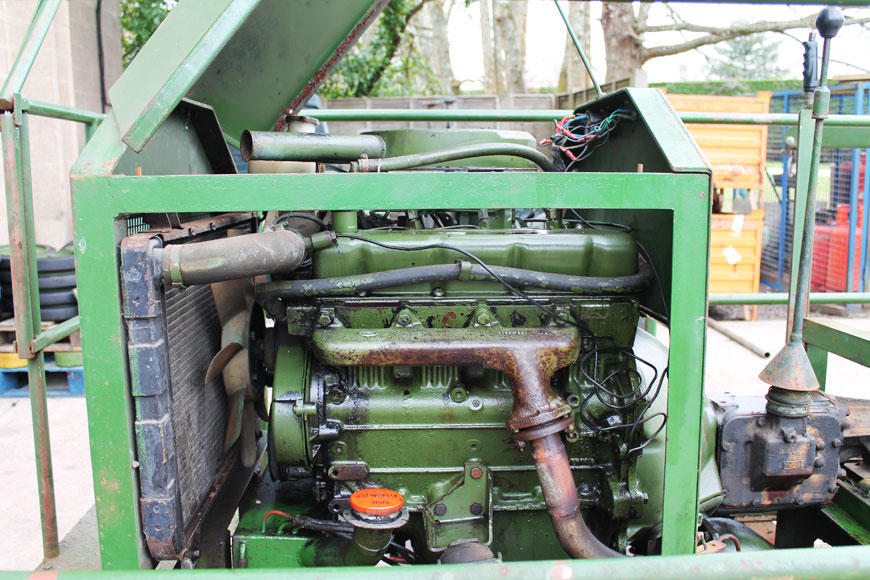
Mechanically, Ivor has much in common with an early-1980s Ford Transit, meaning that unlike the two electric-powered Monorail trains, it uses the Ford’s tough four-cylinder diesel engine, as well as its matching gearbox and differential. As reliability is crucial for this support vehicle, the workshop engineers took the opportunity to service Ivor as part of its strict maintenance regime, removing its wheels to renew all of the bearings for the axles. Reassembled and given a clean bill of health, Ivor is once again on standby for the Monorail.
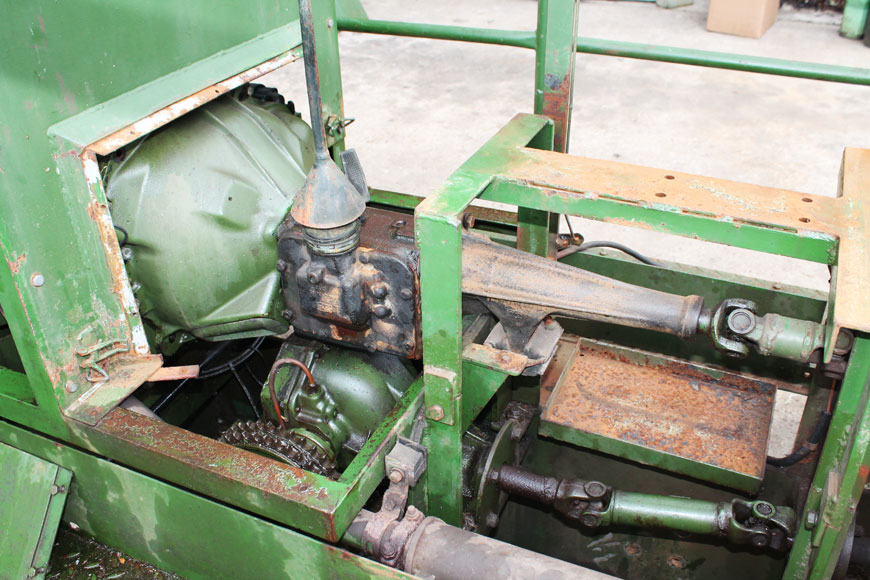

BSA Golden Flash donation
A very attractive classic motorcycle has joined the National Motor Museum’s impressive collection of two-wheeled transportation. This new arrival is a 1953 BSA A10 Golden Flash in first-class condition, which has been generously donated to the museum by its long-term owner.
Living up to its name, this Golden Flash looks stunning with its gold paintwork, but not all examples of this popular model were painted this colour; black paintwork was standard, while oddly the gold colour option was referred to as ‘beige’ in period BSA advertising.
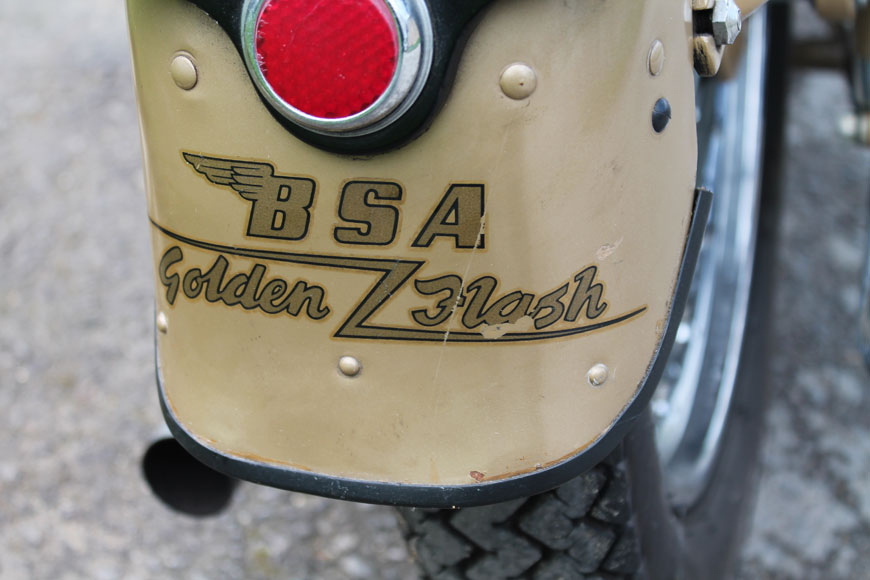
A popular model following its 1950s launch, the Golden Flash produced 35bhp from its 646cc 2-cylinder engine, which was enough to propel a daring owner up to 100mph. Not all owners tested the performance limits of their motorcycles, however, with many preferring to fit practical sidecars to carry luggage or an extra passenger.

This 1953 example is fitted with plunger-type suspension its rear wheel, with buyers also being able to specify a rigid frame as an alternative. Later versions used a revised set-up with swinging arm rear suspension. This Golden Flash now takes pride of place in The Motorcycle Story in the National Motor Museum.

Rolls-Royce Silver Ghost trim
One of the most iconic cars in the National Motor Museum collection, the 1909 Rolls-Royce Silver Ghost recently received restoration work to its elegant Barker Roi des Belges-style body. Following a painstaking body repaint, then the tired upholstery was expertly re-trimmed by K. Baggs Trimming of Poole, Dorset, to create seats, trim panels and carpets that truly are fit for a Rolls-Royce.
Trimmer Kevin Baggs said, “It was a great honour to have carried out and supported the museum on this historic project, it really was a coach-trimmer’s dream.” Requiring more than 250 hours of work to complete, you can read more about this incredible project by clicking here.
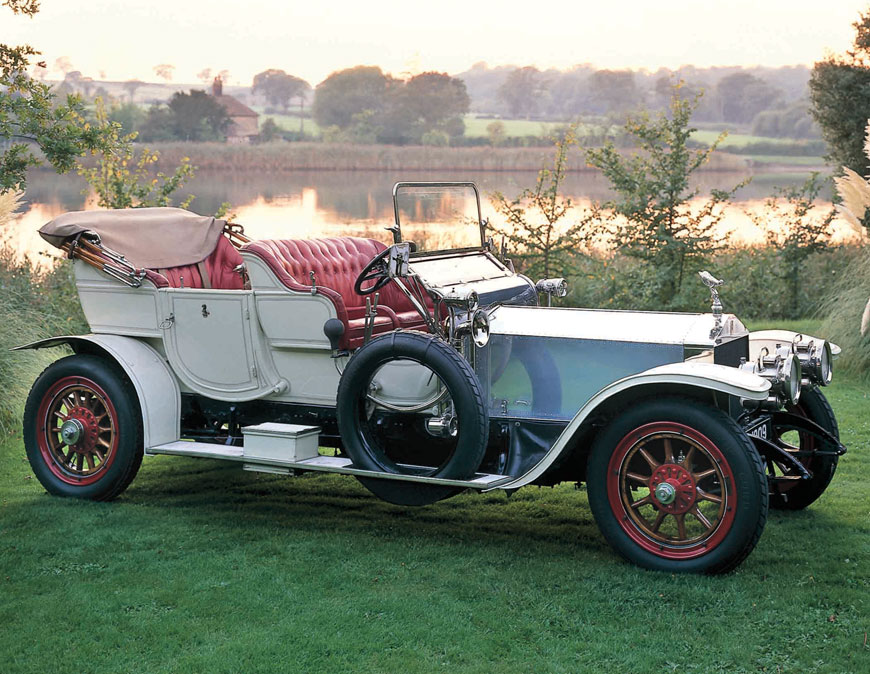
Argyll roof repaint
In addition to maintaining the vehicle collection, the workshop engineers are sometimes called on to undertake more extensive rebuilds when required. The 1913 Argyll 15/30hp is a testament to their skills, having been completely restored in the museum workshop many years ago.
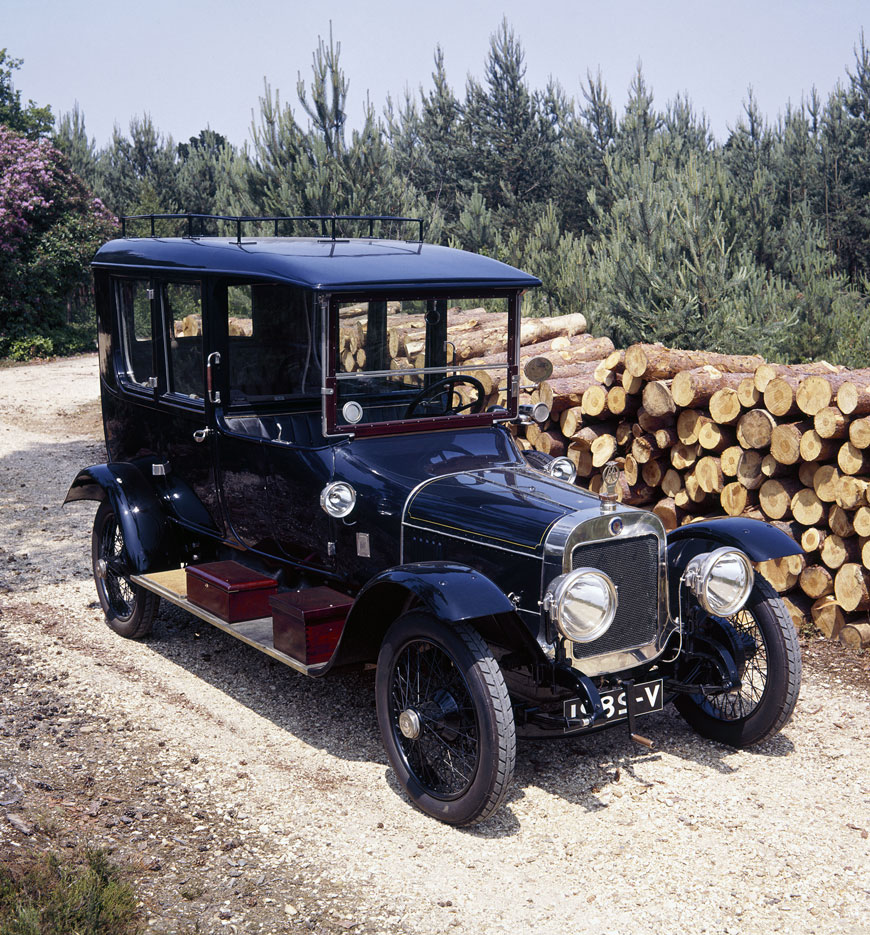
Although this Scottish-built luxury car still looks the part, close inspection by the workshop engineers revealed that its paintwork was starting to show its age and was cracking in places, particularly on the roof. With the rest of the bodywork carefully masked and covered up, the roof was carefully prepared before being professionally coach-painted.
Still owned by the same family that purchased it new, the Argyll is powered by a 4084cc four-cylinder engine. Using a sleeve valve system instead of conventional valve gear, the engine is exceptionally smooth and quiet, while the model is also one of the earliest British production cars to be fitted with brakes on all four wheels. With the paintwork rejuvenation completed, you can see the Argyll back on show in the National Motor Museum.
